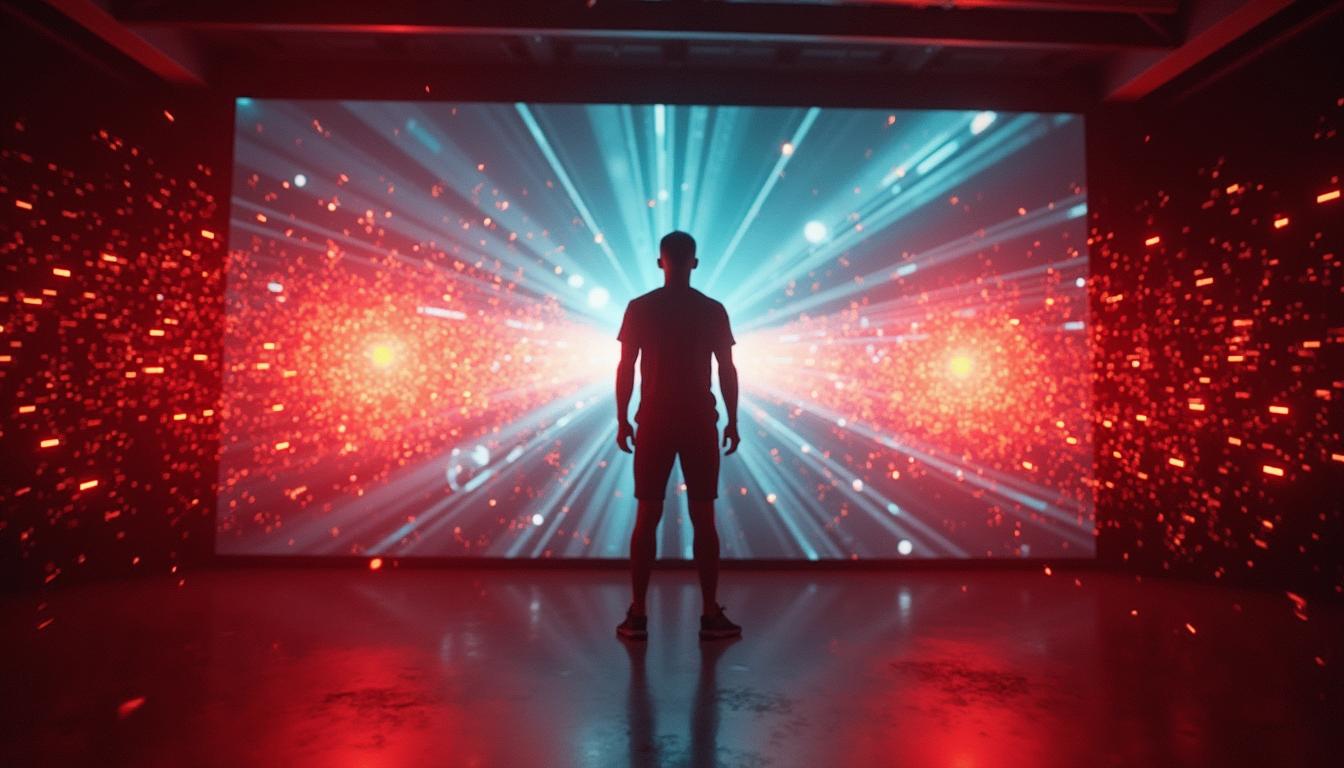Welcome to the Research and Strategy Services at in today's fast-paced.


For a few years now I had admired from a distance the Neurotracker training tool. I've heard about the vast benefits it provides, but I never got to try it. Today I finally got my chance to get up close and personal with it. This blog series is about my experience doing NeuroTracker and following a program that is designed to help me improve my focus and attention. I’m going to share my experience over the coming weeks, and to see if I can observe a difference in my soccer play, not to mention other intense activities like driving or just other day-to-day activities. I hope that you will enjoy the series and perhaps get to try NeuroTracker yourself in the future. - JLJ
Knowing that teams like Manchester United, the New England Patriots, and the Vancouver Canucks were using it, I figured Neurotracker might help with my modest efforts at Wednesday Night soccer. Even if it’s a 30+ league, it’s quite a competitive group, and each week there are always some plays I would like have another shot at, that I think about afterwards. If only I had …
I’m an OK player, recognized for good passing touch. But I have noticed these last couple of years that I have given away possession unnecessarily, more often than I should. It’s not about touch - it’s about bad passing decisions. I’m thinking the issues are rooted in awareness, prediction, field vision. Right in the sweet spot of what Neurotracker is supposed to help with.
So today I began my Neurotracker training, helped along by Jake, my training partner. He ran the system while I did my sessions, so I had an experienced and good-natured operator who helped make the experience that much more enjoyable.

I put on the 3D glasses and sat on a stool in front of the big 3D screen, just a few feet back. Jake started the program, and set my starting protocol, which all up took about 30 seconds. As he knows that I’m an OK athlete, he set the starting point at a higher challenge level than a typical starting point, tracking 4 balls for 8 seconds per run, instead of 3 ball for 6 seconds. He was tapping into my competitive side. I confess I was curious about how my score would come out.
The training started. In the 3D space, eight balls emerged, looking like yellow tennis balls hovering in space, pretty cool actually. Four of the eight balls then turned orange, further highlighted with a white halo. These were the ones I needed to follow. They turned back to yellow, now looking the same as the rest, and then all eight balls started moving in their 3D box. They bounced around, side to side, back to front, and off each other.
In the first round they were moving quite slowly however, so despite all the bouncing and collisions, and even though tracking the balls was completely new to me, I was able to follow them with ease. They suddenly stopped, and were then numbered by the system 1 to 8. Jake asked me to identify the 4 key balls by their numbers, and I rattled off the numbers knowing that I had ‘em.
I actually gave him the numbers in increasing order, rather than, say, reading left to right or just rattling off the numbers based on whatever was most top of mind. I was organizing them in my mind, which is an additional step. Jake warned me that doing it that way could make things harder at faster speeds, and just to rattle ‘em off in the fastest way possible, to help to not lose track. For instance, sometimes a key ball is hidden behind another in the 3D space, and leaning around to see the number can be just enough of a delay that you actually forget what the other balls were. You really gotta focus and move fast!
We then moved to the next round, and it was noticeably faster. I got ‘em all again, but it was clearly harder. I could feel the difference in the challenge level, definitely out of my comfort zone though just in the second series. I could intuit that, if it kept accelerating, I might be OK for another round or two but would then blow past my threshold. It had me wondering about the pro athletes and Special Forces dudes and the speeds they can handle.
Sure enough, the next round started quickly, and I had trouble following the balls. I lost track of a couple right in the first second. It was very interesting to feel my mind work to reconstruct what just happened, all while still following the two balls I still had, to try to recover, and I think I did. But just when I thought I was OK, there was a big, messy collision in the middle of the box, and I lost a couple again. Sure enough, at the moment of reckoning, I got 2 out of 4 wrong.
When the first session ended, Neurotracker had narrowed it down to my threshold which was 1.83. Not bad, says young Jake, for an old dude like me. Thanks, man. Let me know if you need me to buy you a case of beer. Or show you how to shave. My results were quite consistent, though dropping a bit in the last session. That’s normal, says Jake, in part since the subject is usually tiring at this point.
And I was tired! It was less than 10 minutes all up, but I was exhausted, like after a full day in a challenging training course. I was even sweating a bit, despite the lack of movement. My brain felt like it was working hard to assimilate the session, forming new connections, the chemistry piling along. I’m writing this a few hours later, and I still feel that sensation, not unpleasant, but present. I can tell that something is going on in there.
During the session, I began to think about the strategies people might use to follow the balls. Meanwhile I was inadvertently discovering ones that did not work! Looking too hard at a given ball made it hard to track the others. You kinda have to watch 'em all at once. There were times when the four balls (out of 8 bouncing around) were like a single group, not exactly moving together but still in association with each other. That worked really well, until one of those big collisions would happen.

So with one session under my belt I am intrigued, and definitely up for more.
The scientific basis is no doubt very different in terms of what Neurotracker achieves, but there was one thing that was reminiscent of the extreme focus involved when I would play Age of Empires, late at night. In that game, there was a pleasurable focus that would occur as you track about 40 things in parallel, reacting to all kinds of action. You are completely removed from your physical world, if not your daily troubles. Indeed one word for ‘entertain' in French is ‘distraire’ which also translates as ‘distracted’. I found parallels with Neurotracker, I enjoyed the sensation of extreme focus, and I am intrigued by this feeling in my brain, for now anyway!
Back to the science however, it will be very interesting to see how my scores improve with Neurotracker and how that might transfer to my soccer (Wednesday tonight!) and beyond. I’ll be back with observations on that very soon.
-JLJ






Welcome to the Research and Strategy Services at in today's fast-paced.

Discover how you can jump-start your overall brain health and wellness with our NeuroTrackerX guided wellness program in 66 days!

From stereo-3D to adaptive speed thresholds, get the lowdown on what makes NeuroTracker tick.

Check out our 101 on how NeuroTracker works under the hood.
.png)